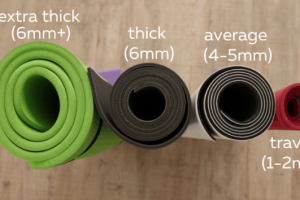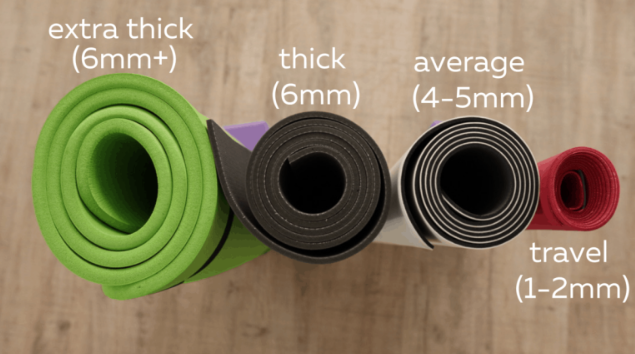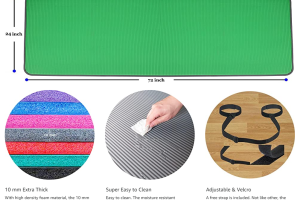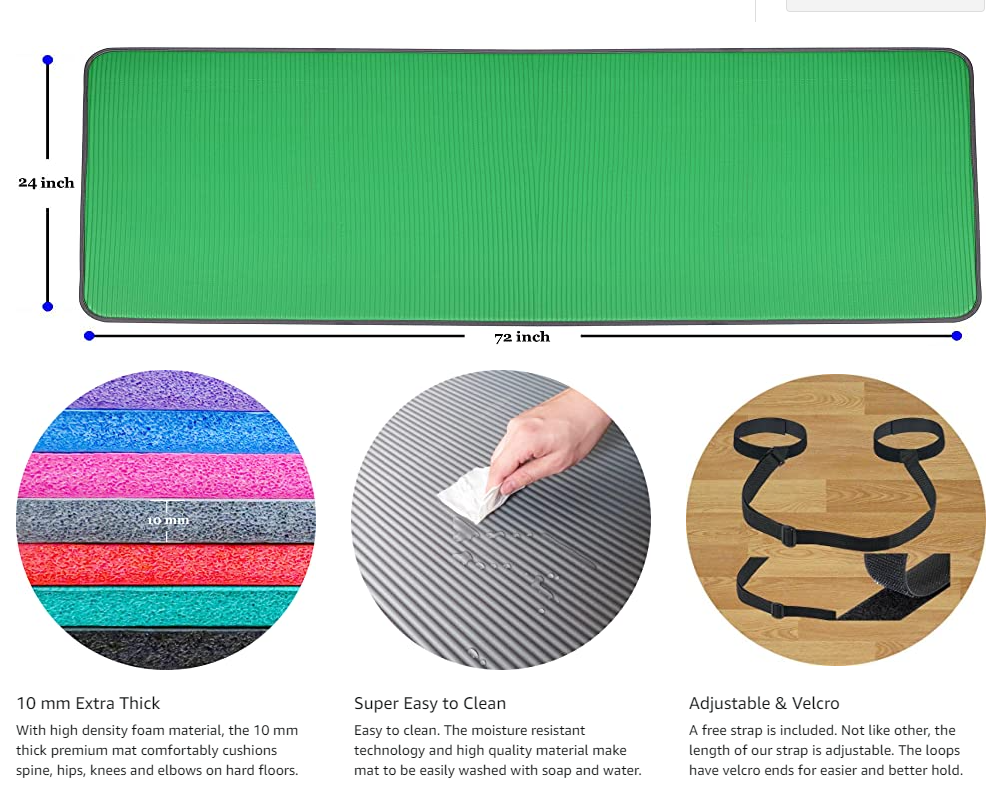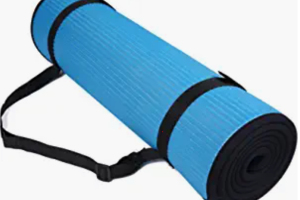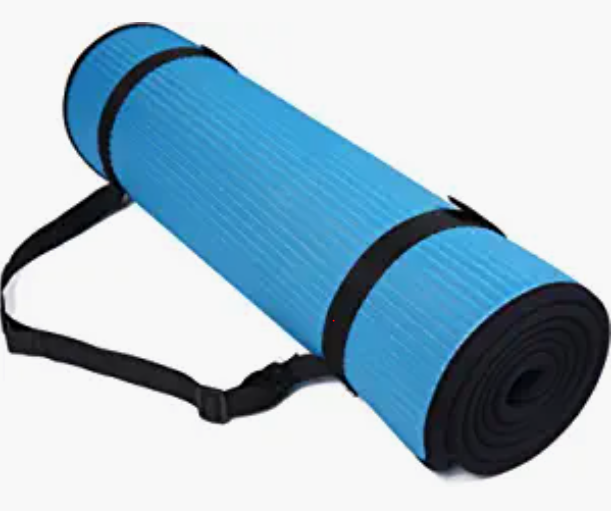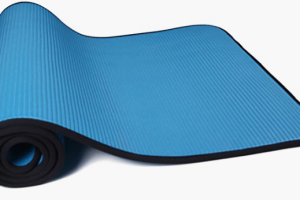Tools for inSelf Yoga Series- 9: Features & factors for choosing Yoga mat
Even though they are analytical, some of the genres are interlinked. Eg: Nadi, Chakra, Kundalini, Higher conscious states → all are linked.
This is the master database of all Tools for the inSelf Yoga Series
November 4th, 2022
Houston, Texas
Yoga Mats are essential for modern-day practitioners, especially for breath infusion practices as they are very aggressive practices.
Before the development of advanced composite material, and climate control technologies, ancient ascetics used the animal's thick skins as a mat for yogic austerities, and as a dress and blanket during cold conditions.
Here in this post, we will discuss mostly the physical aspects of the mat. On the subtle side, I have read Yogi Bhajan's words in Madhva's writing (also it is a general saying), the yoga mat insulates the physical/ subtle body of the practitioner from ground vibrations and prevents the leak of subtle energy from the body to the ground. I have taken their word for it, as they come from accomplished yogis.
Factors for Choosing the right Yoga Mat:
A yoga mat will be the only closest physical companion while doing all the yogic austerities. It is like tiger skin back in the days of the ancient ascetics. So, some importance has to be given while choosing the right one.
When one decides to pursue yoga for a very long term, not just as a hobby or weekly thing, the following factors are to be considered for choosing the right yoga mat, as one will be spending over 100-1000s hours over a few years on it.
- The height and width of the person
- If a person is considerably more than 6' like 6' 6 inches, several full body or leg poses can be challenging to be accommodated inside the mat. Eg: like a dead man's pose
- So, one might have to go to longer mats like 7'. A similar approach applies to the width of the person
- Floor (how slippery the floor is)
- Wooden or tiled floor:
- This will be a challenging floor, as the yoga mat might slip while doing dynamic poses like frog poses or with a lot of movement. Most mats these days have anti-slip features to prevent slipping. They prevent it to a good extent (as shown below).
- Carpet
- This is the best surface. The carpet already acts like a dampener and the slipping of the yoga mat shall not take place.
- Ground, Soil, lawn, or backyard:
- Cork yoga mats are the best and easy to wash grass, insects sticking or soil debris
- They don't degrade with outdoor use
- But they are hard and can't absorb the shock loads and transfer them to the bone joints
- Wooden or tiled floor:
Anti-Slip features in the backside of the mat:

Yoga Mat Features:
- Dimensions:
- As of Nov 2022, the most common and economical sizes for yoga mat has been 6 ft x 2ft (length x width)
- A 6' x 2' yoga mat is more than enough and the price ranges between $15 - $25 and it is easy to carry around
- Larger yoga mats with dimensions like 7'x5' or 8'x4' are very expensive around $80-$150
- One may use this in the home where one has more space.
- The advantages are that one can do more sideways poses within the mat region compared to 2ft wide mat. The downside is the cost and needs to see if it has the required softness.

- Softness:
- Most mats in the market are made up of foam or TPE (Thermo-plastic elastomer) material. They are uausally soft. The shore C duromter is 15-20. (Hardness unit measurement)
- The softer yoga mat is better as they yoga mat absorbs shocks and prevents joints from shock loads and reduces the risk of injury
- Most mats in the market are made up of foam or TPE (Thermo-plastic elastomer) material. They are uausally soft. The shore C duromter is 15-20. (Hardness unit measurement)
- Material:
- This is by far the best website where I have seen on discussing the yoga mat materials:
- The TPE (Thermo-plastic elastomer) foam is the most common in the market.
- The only drawback is it chips way with use within months and the chemical smell comes with this degradation. The above link discusses more on the different types of materials
- Highly degradable material: The chips of the yoga mat will be all over the body, shirt, or carpet with use of few months even in internal use
- I have used cork yoga mats
- They are extremely hard, and shock load during some poses is transferred to joints
- Easy to clean
- This is best material to use outdoors, no thors or sharp grases can damage the mat.
- It cannot degrade easily. The cork does not break down even in outdoor use, very resistant.
- Choosing the right material is a balancing act of pros & cons.
- Thickness:
- This is critical. If the material is soft and has a cushion effect
- The thicker the softer yoga mat → more the softer (TPE) material → more cushion → more shock absorbing capacity of the mat → less transfer of loads to the bone joints compared to hard floors and mats
- The thicker the hard cork yoga mat → more the harder (cork) material → very less cushion → less or no shock absorbing capacity of the mat → full transfer of loads to the bone joints when muscle mass is less (lean people) → more risk of joint injury
- Especially for lean people, where the muscle mass is less in the buttocks and knee joints, these thick soft material mats are very useful. The hard material mats can be a night mare for lean people.
- In the market, generally thickness range from 1-10 mm.
- 6 mm is the most common, widely used in the market
- 10 mm is extra thick, this is what I use and is great for Mahavedha and other dynamic poses.
- Other thickness mats, I have not used it. But must follow the general theory of lower the thickness → lowering the shock-absorbing capacity of the mats.
- Taken from this website
- Anti-Slip/ Skid:
- The design of an anti-slip/skid texture (wave feature) on the back side of the mat will increase the friction of the mat to the floor. This provides a strong grip and higher slip resistance.
- This is necessary for hard floors like wooden and tiled flooring

- Portable Yoga Mat With Carrying Strap:
- The straps are critical and very handy during travel.
- Especially while taking it at the airport and keeping it in flight cabins.
- The straps are good for holding and also keeps the mat from unrolling.
- Learned it hard way while carrying it in bare hands without straps while catching flights
- So, it is easy to lose the portable straps but it is of big use while catching flights and while storing it in overhead cabins.
- Flights usually let people take it with them like a handbag inside the flight. It is not counted as any form of baggage (check-in or carry-on baggage), it is treated like a small handbag/ women's purse. So, no need to fear how the yoga mat will be treated on the flights.
Conclusion:
All these factors and features of yoga mat discussion should shed some light, it is a balancing act to choose the right yoga mat for oneself. I experimented with 3 mats with different materials and thicknesses.
I keep one in my car (or take that on flight) and another at home, so I can practice wherever I go.
Of all the features, just remember 2 main features - material and thickness. They are the most significant. Softness ultimately depends on the material type.
This website gives a good understanding of the different materials of the yoga mat.


